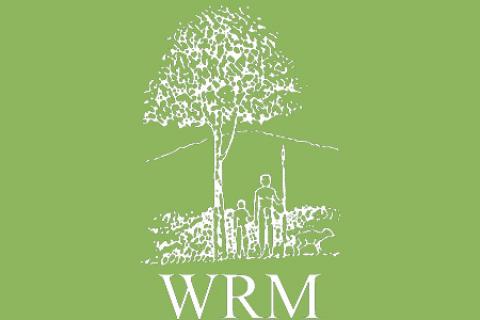Plantation of exotics --rubber, acacia and eucalyptus in particular-- is one major factor that has changed the Modhupur sal forest (Shorea robusta) for ever, with severe consequences for the ethnic communities --Garos and Koch-- who have lived in the forest for centuries.
With loan money from the Asian Development Bank and the World Bank in particular, the government has actually established plantations of alien species all over the public forestland. Except for the Sundarban, only fragments of native forests remain in Bangladesh.
Bulletin articles
The Kali Bachao Andolan (Movement to Save the Kali) made a dramatic move against the serious pollution that the West Coast Paper Mills (WCPM) is causing to the Kali River by discharging untreated effluents. For long local people have suffered enormously from the pollution as they were repeatedly threatened with job losses if WCPM was pressurized to be environmentally responsible.
Long Lunyim is a Penan community from Sungai Pelutan, Baram, located in the Miri Division of the state of Sarawak, Malaysia which used to be a part of another village called Long Tepen. The people of Long Lunyim decided some years ago to leave the village of Long Tepen and establish as a separate longhouse altogether slightly further away over disputes with the Long Tepen's headman on the encroachment of logging activities onto their customary land.
Multilateral and bilateral agencies --World Bank, Asian Development Bank, International Monetary Fund, USAID and Japan Bank for International Cooperation-- have long provided loans and grants for southern countries, throwing them into a debt trap. Sri Lanka is no exception. To repay its foreign debt, the country has overexploited --with an impact on future generations-- its natural resources, including large scale felling of timber, shrimp farming, cultivation of cash crops, mining and the privatisation of water supplies.
The Government qualified as a joke the intention of the Harken Energy oil company to claim, through arbitration, 57,000 million dollars from the country. The company filed a request for arbitration with the International Centre for Settlement of Investment Disputes – ICSID. This body is attached to the World Bank and has its headquarters in Washington, USA.
The Hoktek T’oi community of the Wichi People (Province of Salta, Argentina) has just won a resounding victory in the court action they brought against the Provincial government for the permit granted in 1996 by the Environmental Secretariat to the Los Cordobeses S.A. company, for the deforestation of 1,838 hectares of the community’s traditional territory (see WRM Bulletin 49).
During the second half of September this year, the Ecuadorian NGO Acción Ecológica organized a national meeting in Quito on the subject of “Plantations are not forests.” On 20 and 21 September, approximately 40 organizations representing Ecuadorian Indigenous movements, peasants, people of Afro-Ecuadorian descent, NGOs and parliamentarians, together with representatives from Brazil, Chile and Uruguay analysed the issue of plantations and exchanged experiences.
Like so many other countries in the South, Uruguay has been convinced (by FAO, the World Bank and the Japanese International Cooperation Agency, among others) that it should promote large-scale tree plantations. From the start, it was very clear that the objective was to produce sufficient raw material for pulp production and for this reason, fundamentally, the plantation of eucalyptus was promoted.
The Imataca Forest Reserve’s native forest, located in the extreme east of the country, of imposing scenic beauty and rich biological diversity, fulfils a fundamental role in soil and water protection – of the rivers Yuruan, Cuyuni, Orinoco, Brazo Imataca, Rio Grande, Botanamo, Barima, Orocaima – and is a cultural and sacred reserve for the Indigenous Peoples.
My family's individual struggle and victimisation is typical of what is happening across the populated and high-rainfall areas of rural Australia. In 1984 we moved to North West Tasmania and chose a relatively isolated area to live --one that was away from farms that used chemicals and where the stands of native bush were extensive and beautiful.
The month of September has certainly been rich in important events, warranting the active participation of relevant social actors. The ministerial meeting of the World Trade Organization in Cancun, Mexico, was doubtlessly the most resounding one, both because of the presence of thousands of people and organizations from all over the world, demonstrating in the streets against the WTO, and because of the firm attitude of some countries from the South, in facing the domineering attitude of certain governments from the North. The world will never be the same after Cancun.
From October 13th to 16th the Africa Forest Law Enforcement and Governance ministerial meeting will take place in Yaoundé, Cameroon. Whether this initiative will result in any concrete actions to tackle the immense problem of illegal and unsustainable logging operations in Africa remains to be seen. In the meantime, illegal logging in Cameroon’s forests continues to wreak havoc on the environment, economy and local peoples’ livelihoods.
